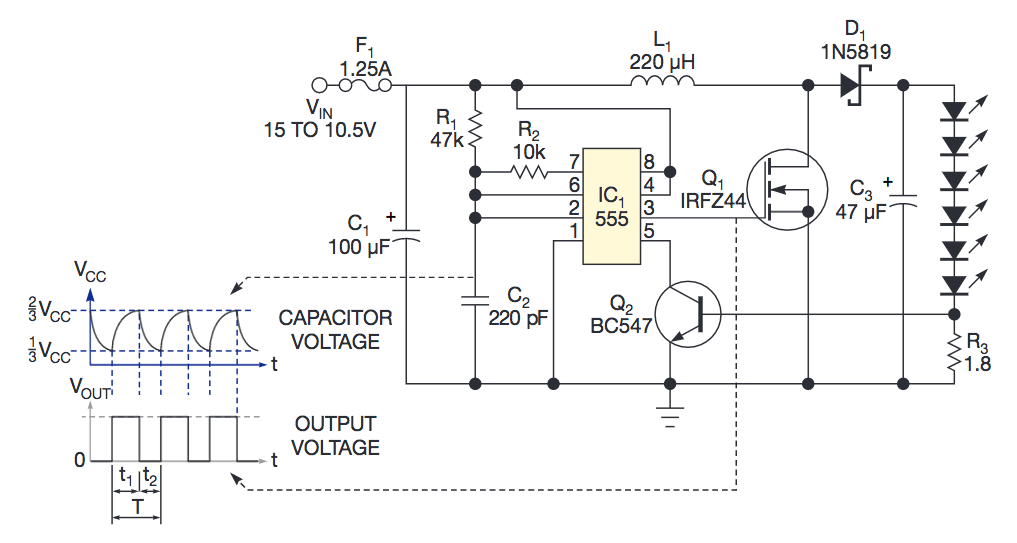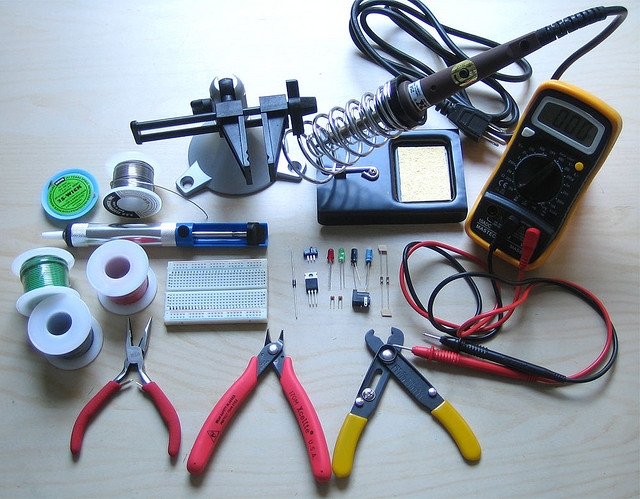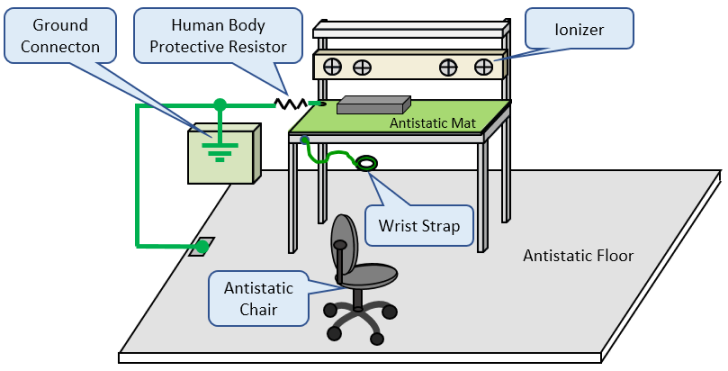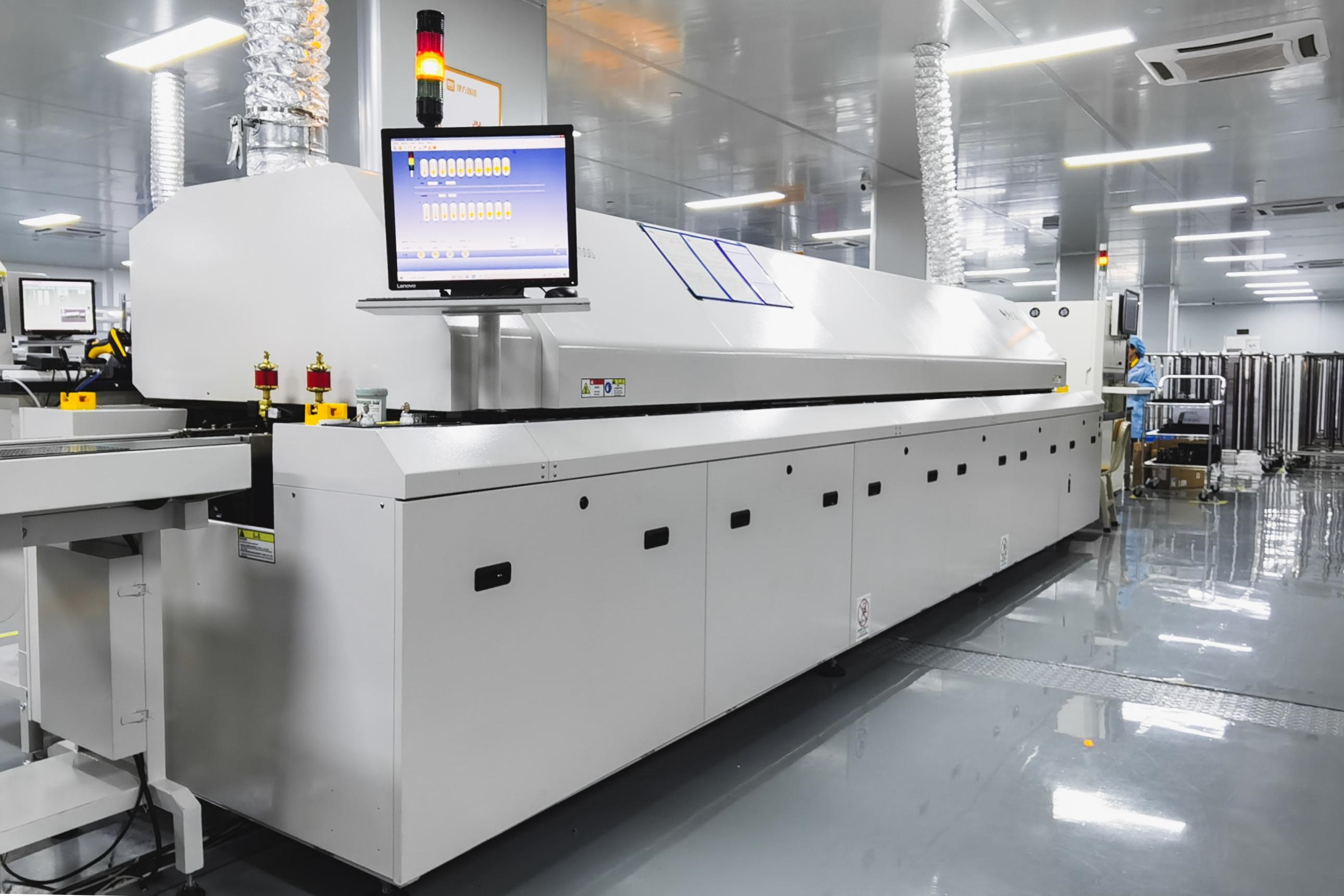In the fast-growing world of electric vehicle (EV) manufacturing, ensuring the reliability and safety of electronic components is critical. One key tool in this process is the ICT (In-Circuit Testing) test fixture, which plays a vital role in Electric Vehicle PCB testing. But what exactly are ICT test fixtures, and why are they so important in EV production? Simply put, ICT test fixtures are specialized setups used to test printed circuit boards (PCBs) by connecting directly to their components, checking for defects, and ensuring they meet strict automotive standards. In this blog, we’ll dive deep into their significance, how they support electronics testing, and why they are essential for high-current tests and EV-specific tests in the automotive industry.
What Are ICT Test Fixtures and Why Do They Matter in EV Manufacturing?
ICT test fixtures are custom-designed tools used during the in-circuit testing phase of PCB manufacturing. These fixtures hold the PCB in place and connect it to a testing system through a series of probes. The system then sends electrical signals to check for issues like short circuits, open circuits, or incorrect component values. In the context of electric vehicle production, where PCBs control everything from battery management systems (BMS) to power inverters, the accuracy of these tests is non-negotiable.
Electric vehicles rely heavily on complex electronics to manage high-voltage systems, often operating at 400V to 800V or more. A single fault in a PCB can lead to catastrophic failures, risking safety and performance. ICT test fixtures ensure that every board meets the high standards required for automotive applications, making them a cornerstone of quality assurance in EV manufacturing.

The Importance of Electric Vehicle PCB Testing
PCBs in electric vehicles are subjected to harsh conditions, including temperature extremes, vibrations, and high electrical loads. Electric Vehicle PCB testing is crucial to verify that these boards can withstand such environments while maintaining functionality. ICT test fixtures are at the heart of this process, enabling manufacturers to detect defects early in production before the boards are integrated into larger systems.
For example, a typical EV battery management system PCB might handle currents exceeding 100A. ICT fixtures are designed to simulate these high-current conditions during testing, ensuring the board’s traces and components can handle the load without overheating or failing. By identifying weak points—such as solder joint defects or incorrect resistor values—ICT testing prevents costly recalls and ensures compliance with automotive standards.
How ICT Test Fixtures Support Electronics Testing in EVs
Electronics testing in EV manufacturing goes beyond simple functionality checks. It involves verifying signal integrity, power distribution, and component reliability under real-world conditions. ICT test fixtures are uniquely suited for this because they provide direct access to individual components on the PCB without needing to power up the entire system.
During testing, an ICT fixture might measure impedance values across critical paths on the PCB. For instance, a power delivery circuit in an EV might require impedance below 10 milliohms to minimize energy loss. The fixture’s probes can pinpoint areas where resistance is too high, allowing engineers to address issues before production scales up. This precision is essential for maintaining the efficiency and safety of EV electronics.
Additionally, ICT fixtures can test for signal speeds in communication circuits, such as those used in Controller Area Network (CAN) bus systems common in EVs. These systems often operate at speeds of 1 Mbps or higher, and any delay or interference can disrupt vehicle operations. ICT testing ensures that signals travel as expected, reducing the risk of communication failures.
Picture Placement: Insert an image here showing a close-up of ICT test probes contacting a PCB. ALT Text: "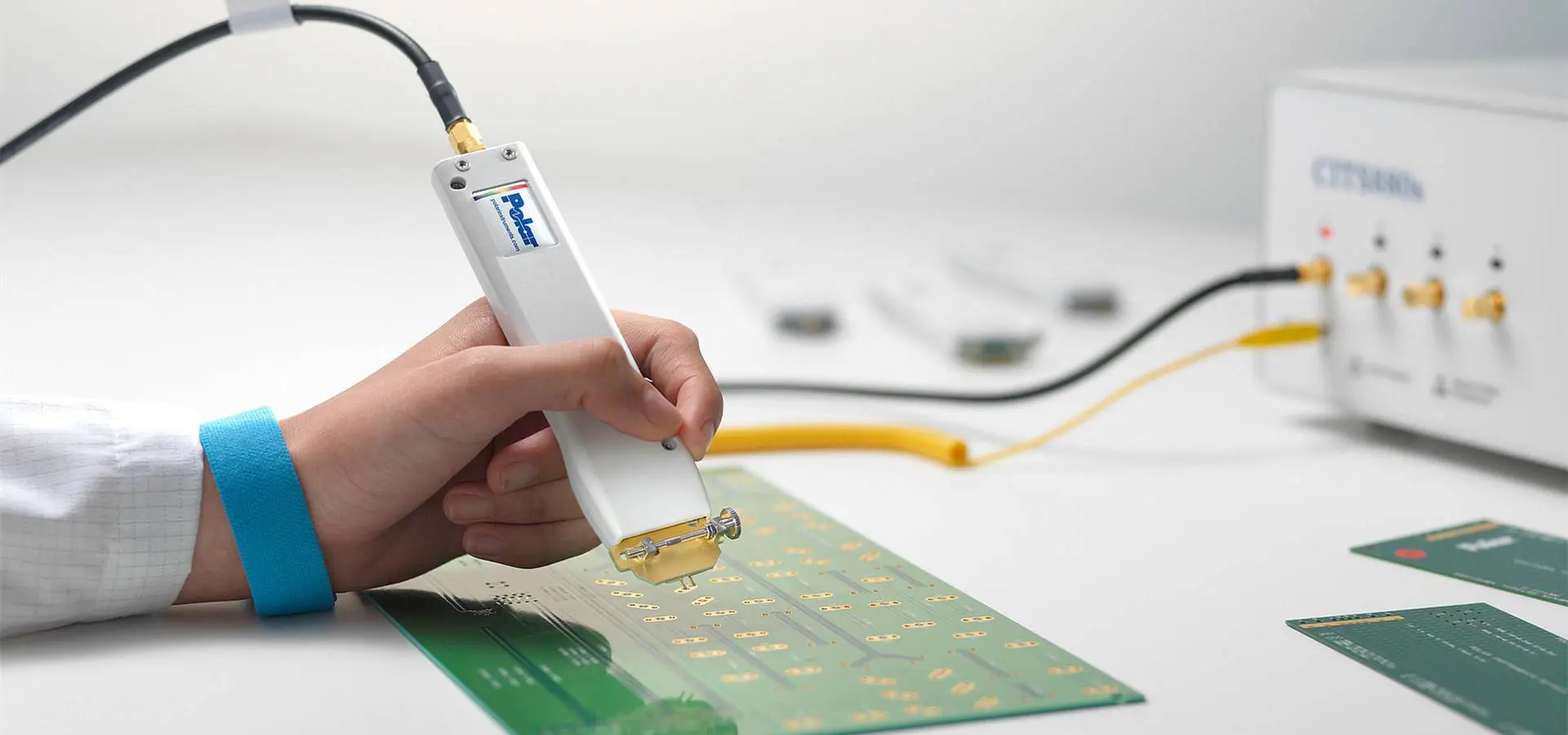 "
"
Meeting Automotive Standards with ICT Test Fixtures
Automotive standards are among the strictest in any industry, and for good reason. Electric vehicles must adhere to guidelines like ISO 26262 for functional safety and AEC-Q100 for electronic component reliability. ICT test fixtures help manufacturers comply with these standards by providing consistent, repeatable testing that validates every aspect of a PCB’s performance.
For instance, AEC-Q100 requires components to operate reliably across a temperature range of -40°C to 125°C. ICT fixtures can be paired with environmental chambers to simulate these conditions during testing, ensuring that the PCB performs as expected under stress. This is especially important for EVs, where components are exposed to extreme heat from battery packs or cold from winter conditions.
Moreover, automotive standards often mandate traceability in manufacturing. ICT test systems, supported by well-designed fixtures, can log detailed test data for every board, creating a record that proves compliance. This documentation is invaluable during audits or if a fault needs to be traced back to its source.
High-Current Test Challenges in EV Manufacturing
One of the biggest challenges in EV PCB testing is conducting high-current tests. Electric vehicles often require circuits that can handle currents ranging from 50A to over 300A, especially in powertrain and battery systems. Traditional testing setups struggle with these levels, but ICT test fixtures are built to accommodate such demands.
High-current testing involves delivering large amounts of power through the PCB while monitoring for issues like overheating, voltage drops, or component failure. ICT fixtures for EV applications are often equipped with heavy-duty probes and connectors capable of carrying these currents without degrading. For example, a fixture might use probes rated for 10A per pin, with multiple pins connected in parallel to handle a total of 200A or more.
The goal of high-current testing is to ensure that the PCB’s design—down to the width of its copper traces—can manage the load without risk. A trace designed for 100A might need to be at least 2mm wide with a thickness of 2oz copper to avoid excessive heat buildup. ICT fixtures help verify these parameters by measuring temperature rise and voltage stability during the test.
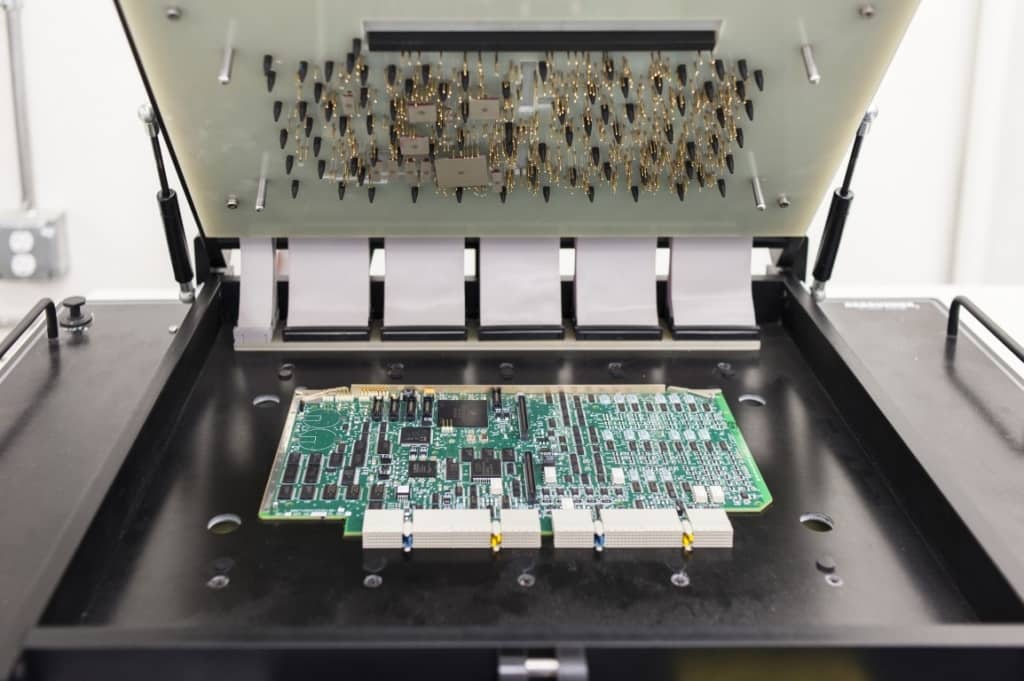
EV-Specific Tests and the Role of ICT Fixtures
Unlike traditional vehicles, EVs require specialized testing to address unique challenges like high-voltage systems, electromagnetic interference (EMI), and energy efficiency. EV-specific tests often focus on areas such as insulation resistance, leakage current, and EMI susceptibility—areas where ICT test fixtures provide critical support.
For example, insulation resistance testing is vital for high-voltage EV systems operating at 800V or more. A failure in insulation could lead to dangerous short circuits or shocks. ICT fixtures can apply high-voltage test signals—sometimes up to 1000V or higher—to measure resistance between conductors and ground, ensuring that insulation meets safety thresholds (often in the range of 1 MΩ or greater).
EMI testing is another area where ICT fixtures shine. EVs are packed with sensitive electronics that must operate without interference, even in the presence of strong electromagnetic fields from motors or chargers. ICT systems can simulate EMI conditions while the fixture monitors how the PCB responds, identifying potential vulnerabilities in signal paths or grounding designs.
Benefits of Using ICT Test Fixtures in EV Production
The advantages of ICT test fixtures in EV manufacturing are numerous, impacting both quality and efficiency. Here are some key benefits:
- Early Defect Detection: ICT testing catches issues like misplaced components or soldering defects before assembly, reducing rework costs.
- Speed and Scalability: Automated ICT systems, supported by well-designed fixtures, can test hundreds of boards per hour, keeping up with high-volume EV production.
- Customization for EV Needs: Fixtures can be tailored to test specific EV components, such as BMS or inverter boards, ensuring accurate results.
- Cost Savings: By identifying faults early, ICT fixtures prevent expensive failures in later stages of production or after vehicles reach customers.
Choosing the Right ICT Test Fixture for EV Manufacturing
Not all ICT test fixtures are created equal, especially when it comes to the demands of EV production. When selecting a fixture, manufacturers should consider factors like current and voltage ratings, probe durability, and compatibility with automated test systems. For high-current applications, fixtures with reinforced probes and cooling mechanisms may be necessary to handle the heat generated during testing.
Additionally, the fixture’s design should account for the specific layout of the PCB being tested. Custom fixtures are often required to align perfectly with test points on complex EV boards, ensuring accurate contact without damaging components. Working with a trusted provider for fixture design and manufacturing can make a significant difference in test reliability.
Future Trends: ICT Testing in the Evolving EV Industry
As the EV industry continues to grow, so too will the demands on testing technologies. Future ICT test fixtures are likely to incorporate advanced features like integrated thermal imaging to detect hot spots during high-current tests or AI-driven analysis to predict potential failures based on test data. These innovations will further enhance the role of ICT fixtures in ensuring the safety and performance of next-generation electric vehicles.
Moreover, as EV designs move toward higher voltages (some systems are already targeting 1200V) and faster charging capabilities, ICT fixtures will need to adapt to even greater electrical and thermal challenges. Staying ahead of these trends will be essential for manufacturers aiming to maintain a competitive edge in the market.
Conclusion: ICT Test Fixtures as a Backbone of EV Quality
In the high-stakes world of electric vehicle manufacturing, ICT test fixtures are indispensable tools for ensuring the quality and reliability of PCBs. From supporting Electric Vehicle PCB testing to meeting rigorous automotive standards, these fixtures play a critical role in electronics testing, high-current test scenarios, and EV-specific tests. By catching defects early, enabling precise measurements, and ensuring compliance with safety standards, ICT fixtures help manufacturers build EVs that are safe, efficient, and ready for the road.
At ALLPCB, we understand the importance of reliable testing solutions in EV production. Our expertise in PCB manufacturing and testing ensures that every board meets the highest standards, supporting the future of sustainable transportation. Whether you’re developing components for battery systems or power electronics, ICT test fixtures are a key step in delivering flawless performance.
 ALLPCB
ALLPCB




